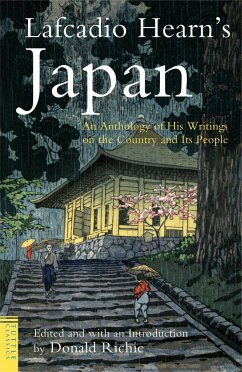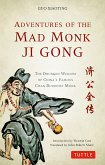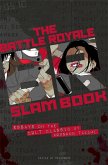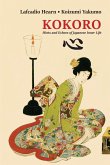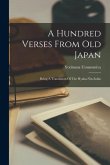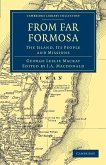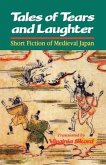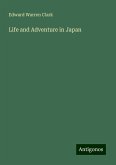Lafcadio HearnAn Anthology of His Writings on the Country and It's People
Lafcadio Hearn's Japan
An Anthology of His Writings on the Country and It's People
Herausgeber: Richie, Donald
14,99 €
inkl. MwSt.
Versandfertig in über 4 Wochen

7 °P sammeln
Lafcadio HearnAn Anthology of His Writings on the Country and It's People
Lafcadio Hearn's Japan
An Anthology of His Writings on the Country and It's People
Herausgeber: Richie, Donald
- Broschiertes Buch
- Merkliste
- Auf die Merkliste
- Bewerten Bewerten
- Teilen
- Produkt teilen
- Produkterinnerung
- Produkterinnerung
Lafcadio Hearn is one of the best-known Westerners to ever make Japan his home
Andere Kunden interessierten sich auch für
![Adventures of the Mad Monk Ji Gong Adventures of the Mad Monk Ji Gong]() Guo XiaotingAdventures of the Mad Monk Ji Gong12,99 €
Guo XiaotingAdventures of the Mad Monk Ji Gong12,99 €![The Battle Royale Slam Book: Essays on the Cult Classic by Koshun Takami The Battle Royale Slam Book: Essays on the Cult Classic by Koshun Takami]() The Battle Royale Slam Book: Essays on the Cult Classic by Koshun Takami12,99 €
The Battle Royale Slam Book: Essays on the Cult Classic by Koshun Takami12,99 €![Kokoro Kokoro]() Lafcadio HearnKokoro18,99 €
Lafcadio HearnKokoro18,99 €![A Hundred Verses From Old Japan A Hundred Verses From Old Japan]() Yoritsuna UtsunomiyaA Hundred Verses From Old Japan21,99 €
Yoritsuna UtsunomiyaA Hundred Verses From Old Japan21,99 €![From Far Formosa From Far Formosa]() George Leslie MackayFrom Far Formosa41,99 €
George Leslie MackayFrom Far Formosa41,99 €![Tales of Tears and Laughter Tales of Tears and Laughter]() Tales of Tears and Laughter23,99 €
Tales of Tears and Laughter23,99 €![Life and Adventure in Japan Life and Adventure in Japan]() Edward Warren ClarkLife and Adventure in Japan49,90 €
Edward Warren ClarkLife and Adventure in Japan49,90 €-
-
-
Lafcadio Hearn is one of the best-known Westerners to ever make Japan his home
Hinweis: Dieser Artikel kann nur an eine deutsche Lieferadresse ausgeliefert werden.
Hinweis: Dieser Artikel kann nur an eine deutsche Lieferadresse ausgeliefert werden.
Produktdetails
- Produktdetails
- Verlag: Tuttle Publishing
- Seitenzahl: 224
- Erscheinungstermin: 15. Oktober 2007
- Englisch
- Abmessung: 206mm x 131mm x 24mm
- Gewicht: 265g
- ISBN-13: 9784805308738
- ISBN-10: 4805308737
- Artikelnr.: 22819626
- Herstellerkennzeichnung
- Libri GmbH
- Europaallee 1
- 36244 Bad Hersfeld
- gpsr@libri.de
- Verlag: Tuttle Publishing
- Seitenzahl: 224
- Erscheinungstermin: 15. Oktober 2007
- Englisch
- Abmessung: 206mm x 131mm x 24mm
- Gewicht: 265g
- ISBN-13: 9784805308738
- ISBN-10: 4805308737
- Artikelnr.: 22819626
- Herstellerkennzeichnung
- Libri GmbH
- Europaallee 1
- 36244 Bad Hersfeld
- gpsr@libri.de
Lafcadio Hearn (1850-1904) was born on the Greek island of Lefkas, the son of an Anglo-Irish surgeon in the British army and a Greek mother. After his parent's divorce when he was six, he was brought up in Dublin by a great aunt. At the age of nineteen, he went to America, eventually ending up in New Orleans as a newspaper reporter. His flight from Western materialism brought him to Japan in 1890, where he worked for an English newspaper, the Kobe Chronicle, and taught in various schools. In 1896, he began teaching English literature at Tokyo Imperial University, a position he held until 1903, and at Waseda University. Hearn married a samurai's daughter, Koizumi Setsu, became a Japanese citizen and a Buddhist and changed his name to Koizumi Yakumo. At the young age of 54, he died of a heart attack. Hearn's search for beauty and tranquility, for pleasing customs and lasting values, made him a confirmed Japanophile. His keen intellect, poetic imagination, and wonderful clear style permitted him to penetrate to the very essence of things Japanese. He became the great interpreter of things Japanese to the West. Hearn's most famous work is a collection of lectures entitled Japan: An Attempt at Interpretation (published posthumously in 1905). His other books on Japan include Glimpses of Unfamiliar Japan (1894), Out of the East (1895), Kokoro (1896), Gleanings in Buddha Fields (1897), Exotics and Retrospectives (1898), In Ghostly Japan (1899), Shadowings (1900), A Japanese Miscellany (1901), and Kwaidan (1904). Donald Richie, novelist, essayist, journalist, and film scholar, was born in Lima, Ohio, in 1924, but has spent most of the last sixty years (except for time at Columbia University in the early 1950s and as curator of film at New York's Museum of Modern Art in 1968-73) witnessing and reporting on the transformation of Japan from postwar devastation to twenty-first century economic and cultural powerhouse. Arriving in Tokyo on New Year/s Day, 1947, he worked as a feature writer and film critic for the Pacific Stars and Stripes. After graduating from Columbia, he returned to Japan as film critic for the Japan Times. Although he is especially well known for his analysis of Japanese cinema and for his instrumental role in introducing Japanese film to the West, he is also considered the doyen of cultural observation, helping to define modern Japan and Japanese culture for Western readers while steadfastly believing that "the ostensible is the real," or what you see is what you get. He is the author of some forty books of fiction and non-fiction, dozens of speeches and essays, and hundreds of book, film, and arts reviews. Recent collections include The Donald Richie Reader: 50 Years of Writing on Japan (2001) and Japan Journals 1947-2004 (2004), based on his detailed record of his life in Japan. He still lives and writes in Tokyo.
